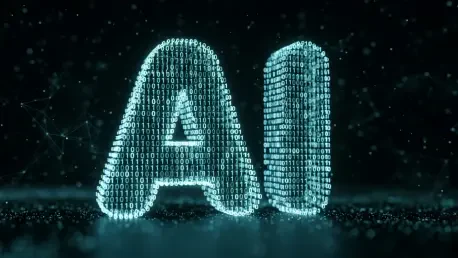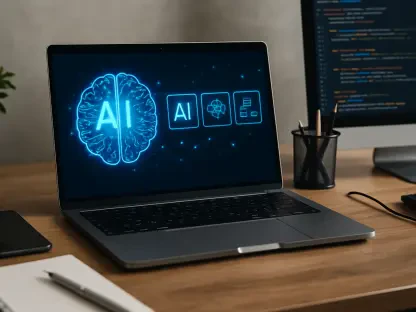Introduction to PDCA and AI Code Generation
The software development landscape is undergoing a seismic shift with the rapid integration of AI code generation tools, promising accelerated productivity but often delivering inconsistent results that challenge developers. A staggering insight from recent industry reports reveals that a 25% increase in AI adoption correlates with a 7.2% decline in delivery stability, highlighting a critical gap between potential and performance. This discrepancy raises an urgent need for structured approaches to harness AI’s capabilities effectively.
The Plan-Do-Check-Act (PDCA) framework, a time-tested methodology for process improvement, emerges as a potential solution to refine AI-driven development. Originally designed for iterative enhancement in industrial settings, PDCA offers a cyclical structure that could address prevalent challenges in AI code generation, such as quality degradation and integration hurdles. Its systematic nature provides a blueprint for aligning AI outputs with organizational goals.
This discussion centers on a pivotal question: How can the PDCA framework mitigate the persistent issues of erratic code quality and delayed delivery in AI-assisted software development? By exploring this intersection, the aim is to uncover a pathway toward sustainable and reliable AI integration in coding practices.
The Current State of AI Code Generation: Challenges and Gaps
AI code generation tools have surged in popularity, driven by their promise to expedite development cycles and reduce manual effort. Despite this enthusiasm, the reality often falls short, with significant evidence pointing to quality issues that undermine their benefits. Studies indicate a tenfold increase in duplicated code blocks, a trend that not only inflates maintenance burdens but also introduces defects at an alarming rate.
Further compounding the problem is the instability in delivery outcomes. As organizations scale up AI adoption, the inability to effectively define, test, and deploy outputs leads to integration bottlenecks. Reports underscore that this gap results in a notable decline in software reliability, posing risks to project timelines and end-user satisfaction.
Addressing these challenges necessitates a shift toward structured human-AI collaboration. Without a disciplined approach, the potential of AI tools remains untapped, perpetuating a cycle of inefficiency. Establishing repeatable practices that guide AI agents while leveraging human expertise is essential to bridge the divide between expectation and actual results.
Applying the PDCA Framework to AI Code Generation
Plan: Structured Goal-Setting and Task Breakdown
The planning phase of PDCA serves as the foundation for effective AI code generation, focusing on aligning tasks with overarching business objectives. This stage involves a comprehensive analysis of project goals, ensuring that AI agents receive clear, actionable directives. By breaking down complex features into small, testable increments, scope creep and redundant efforts are minimized.
Structured prompts and predefined working agreements play a critical role in this phase, guiding AI to prioritize quality and coherence in outputs. These tools ensure that the AI remains focused on specific deliverables, avoiding tangents that could derail progress. Such meticulous preparation sets a robust framework for subsequent actions, enhancing predictability in results.
Investing time upfront in detailed planning also acts as a safeguard against unnecessary regressions. By establishing clear success criteria and iterative checkpoints, developers can anticipate potential pitfalls and adjust strategies accordingly. This proactive stance is indispensable for maintaining alignment with project expectations in AI-driven environments.
Do: Test-Driven Implementation with Human Oversight
In the implementation phase, a test-driven development (TDD) approach anchors the PDCA cycle, employing the red-green-refactor methodology to ensure code reliability. AI agents are instructed to write failing tests first, followed by production code to pass these tests, creating a feedback loop that curbs errors early. This disciplined cycle fosters incremental progress with verifiable outcomes.
Human oversight remains paramount during this stage, providing essential guardrails to correct context drift and uphold established coding patterns. Developers intervene to address reasoning errors or gaps in AI understanding, ensuring that outputs align with architectural standards. This collaborative dynamic balances AI efficiency with human judgment, safeguarding quality.
Batching related changes further optimizes this process, allowing for efficient implementation without compromising on rigor. By grouping parallel modifications and verifying them collectively, developers can reduce token usage in AI interactions while maintaining focus on behavioral correctness. Such strategies enhance both productivity and precision in code generation.
Check: Validation and Completion Analysis
The checking phase focuses on validating AI-generated code against initial objectives and predefined guidelines, ensuring that deliverables meet expected standards. AI agents are tasked with reviewing test coverage, internal documentation, and architectural consistency, identifying deviations that require attention. This systematic evaluation acts as a quality gate before final acceptance.
Completion analysis extends beyond functional verification to assess process adherence, confirming whether test-driven principles were consistently applied. This step generates detailed artifacts that document outcomes, providing transparency for tracking and future reference. Such records are invaluable for maintaining accountability in collaborative settings.
By streamlining human code review, this phase accelerates feedback cycles and enhances decision-making. Discrepancies flagged during validation enable prompt corrective actions, reducing downstream rework. The resulting clarity not only boosts efficiency but also builds trust in AI-assisted outputs among development teams.
Act: Retrospectives for Continuous Improvement
The final phase of PDCA emphasizes retrospectives to drive continuous improvement in AI code generation practices. After each coding session, micro-retrospectives analyze collaboration patterns, pinpointing successful interventions and areas for enhancement. This reflective practice helps refine prompts and interaction strategies for future iterations.
Analyzing what worked and what didn’t allows developers to adapt their approach, mitigating inconsistencies in AI performance over time. Insights gained from these sessions inform adjustments to working agreements, ensuring that human-AI dynamics evolve in tandem with project needs. This iterative learning process is crucial for sustained progress.
Continuous improvement through retrospectives also fosters a culture of adaptability, equipping teams to handle varying complexities in development tasks. By systematically addressing inefficiencies, the PDCA framework ensures that each cycle builds on the lessons of the last, paving the way for more reliable and effective AI integration.
Experimental Insights and Measurable Outcomes
Methodology
To evaluate the efficacy of the PDCA framework in AI code generation, a comparative experiment was conducted using tools like Cursor with Anthropic models. Two approaches—PDCA-structured and unstructured—were applied to identical coding tasks, allowing for a direct assessment of their impact. The experimental design focused on capturing both quantitative and qualitative data to ensure a holistic analysis.
Metrics collected included token usage during different activities, lines of production and test code generated, test coverage percentages, and subjective developer experience ratings. These indicators provided a comprehensive view of efficiency, quality, and usability across the two methodologies. The tasks chosen were representative of typical software development challenges, ensuring relevance of the findings.
Findings
Results from the experiment revealed distinct advantages of the PDCA approach over unstructured methods. Token usage for troubleshooting was significantly lower in PDCA sessions, with only 20% of tokens spent post-implementation compared to 80% in unstructured workflows. Additionally, PDCA resulted in fewer lines of production code—350 versus 534—while achieving higher test coverage with 984 lines of test code against 759.
Qualitative feedback further underscored PDCA’s benefits, with developers reporting a superior experience due to consistent human interaction throughout planning and coding phases. In contrast, unstructured approaches often deferred interaction to troubleshooting, leading to frustration and inefficiency. These observations highlight PDCA’s role in fostering a more engaged and controlled development process.
Implications
The structured nature of PD, suggests a viable path for sustainable AI adoption in software development, balancing upfront planning costs with reduced maintenance overhead. By catching issues early through test-driven cycles, organizations can minimize long-term technical debt, enhancing overall project outcomes. This approach aligns well with enterprise needs for predictable and maintainable codebases.
Scaling PDCA practices across teams holds promise for addressing broader organizational challenges, such as inconsistent tool usage and fragmented workflows. Standardizing human-AI collaboration through this framework could streamline integration at scale, ensuring uniformity in quality standards. Such scalability is critical for large-scale AI deployment in complex environments.
Looking ahead, the findings point to a need for AI tools to evolve in alignment with structured methodologies like PDCA. Future iterations of these tools could incorporate built-in support for iterative planning and validation, reducing reliance on manual oversight. This evolution would further cement PDCA’s relevance in optimizing AI-driven development landscapes.
Reflection and Future Directions
Reflection
The application of the PDCA framework to AI code generation reflects an ongoing journey of adaptation, mirroring the rapid evolution of AI technologies themselves. Balancing the formality of the process with varying task complexities has proven challenging, often requiring tailored adjustments to maintain efficiency. Iterative refinement of prompts and interaction patterns has been instrumental in overcoming these hurdles.
Limitations in current experiments, primarily rooted in individual experiences, underscore the need for broader validation across diverse contexts. While initial results are promising, scaling these insights to team settings and varied project scopes remains untested. Acknowledging these constraints ensures a grounded perspective on the framework’s applicability.
Future Directions
Exploration into calibrating PDCA rigor based on task complexity presents a compelling avenue for enhancement. Developing lighter planning protocols for simpler, well-defined tasks could optimize resource usage without sacrificing quality. Conversely, maintaining robust analysis for intricate integrations would safeguard against costly errors in high-stakes scenarios.
Experimentation with model selection strategies also warrants attention, aiming to balance cost and performance by matching AI model capabilities to task demands. For instance, leveraging less resource-intensive models for routine implementations post-detailed planning could yield efficiency gains. Such strategies would refine the economic viability of PDCA-driven workflows.
Adapting PDCA for team environments and integrating it with existing project management tools offers another frontier for research. Facilitating collaborative retrospectives and shared planning artifacts could enhance collective accountability and learning. These advancements would position PDCA as a cornerstone for enterprise-wide AI adoption in software development.
Conclusion
The exploration of the PDCA framework in AI code generation uncovered significant strides in addressing quality and integration challenges through structured collaboration. The experimental evidence demonstrated reduced troubleshooting efforts and improved test coverage, marking a notable improvement over unstructured methods. These outcomes underscored the value of disciplined human-AI interaction in achieving reliable software outputs.
Moving forward, actionable steps include refining the framework’s flexibility to suit diverse task complexities, ensuring that planning rigor matches project needs. Additionally, integrating PDCA with team-based tools and workflows emerged as a critical next step to amplify its impact at scale. These efforts aim to solidify a sustainable model for AI-driven development.
Beyond immediate applications, fostering industry-wide dialogue on evolving AI tools to support structured methodologies like PDCA holds immense potential. Encouraging tool developers to embed iterative planning and validation features could transform the landscape of software creation. Such innovations promise to elevate productivity while preserving the integrity of complex development ecosystems.









